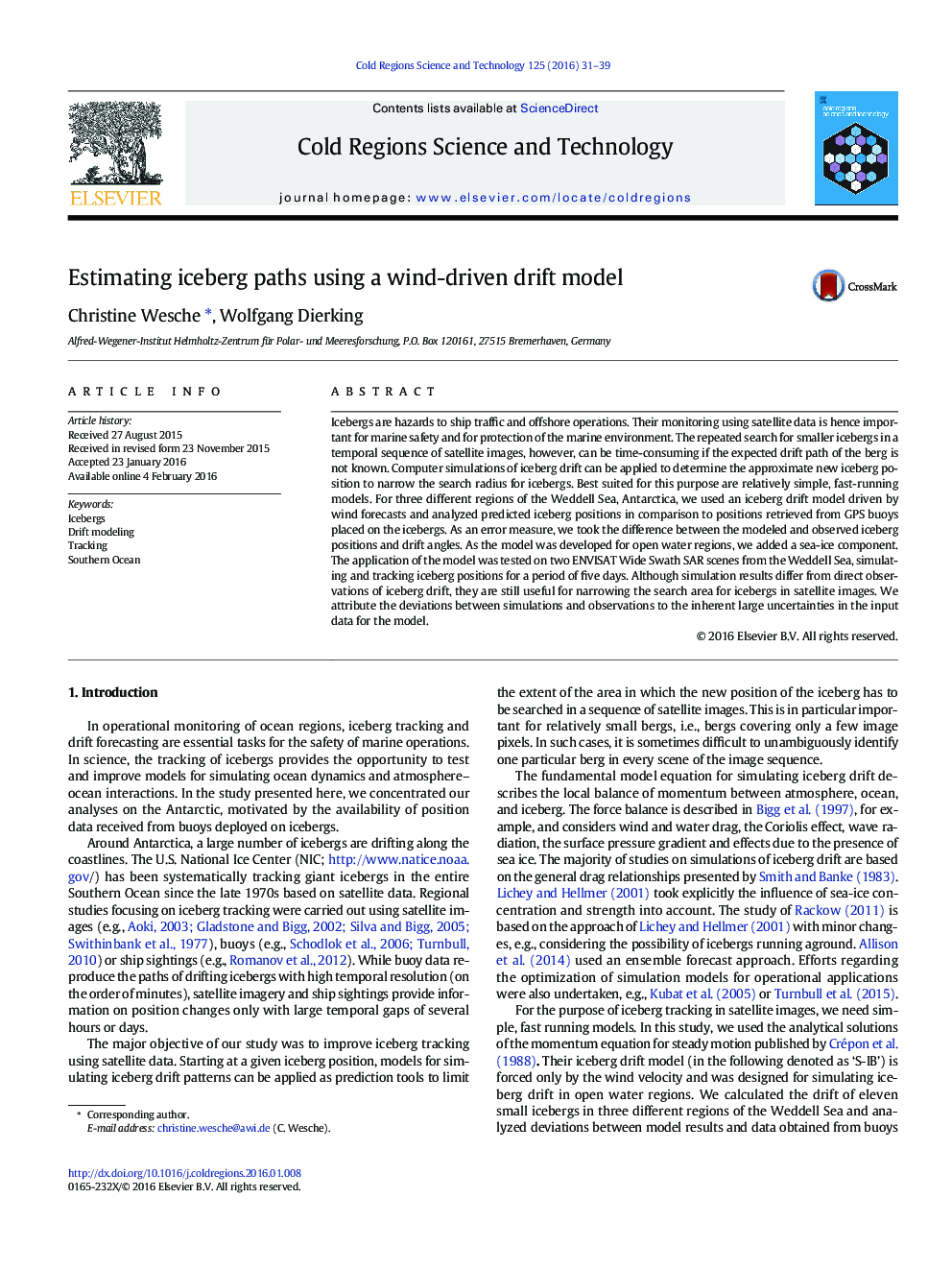| Article ID | Journal | Published Year | Pages | File Type |
|---|---|---|---|---|
| 6426622 | Cold Regions Science and Technology | 2016 | 9 Pages |
â¢Presentation of a wind-driven iceberg drift model based on the approach of Crépon et al. (1988).â¢Model results were compared with buoy data of eleven medium-sized icebergs in three different regions of the Weddell Sea, Antarctica.â¢Extension of the model by a sea-ice component.â¢Application of the model for iceberg re-detection in Synthetic Aperture Radar imagery.
Icebergs are hazards to ship traffic and offshore operations. Their monitoring using satellite data is hence important for marine safety and for protection of the marine environment. The repeated search for smaller icebergs in a temporal sequence of satellite images, however, can be time-consuming if the expected drift path of the berg is not known. Computer simulations of iceberg drift can be applied to determine the approximate new iceberg position to narrow the search radius for icebergs. Best suited for this purpose are relatively simple, fast-running models. For three different regions of the Weddell Sea, Antarctica, we used an iceberg drift model driven by wind forecasts and analyzed predicted iceberg positions in comparison to positions retrieved from GPS buoys placed on the icebergs. As an error measure, we took the difference between the modeled and observed iceberg positions and drift angles. As the model was developed for open water regions, we added a sea-ice component. The application of the model was tested on two ENVISAT Wide Swath SAR scenes from the Weddell Sea, simulating and tracking iceberg positions for a period of five days. Although simulation results differ from direct observations of iceberg drift, they are still useful for narrowing the search area for icebergs in satellite images. We attribute the deviations between simulations and observations to the inherent large uncertainties in the input data for the model.
